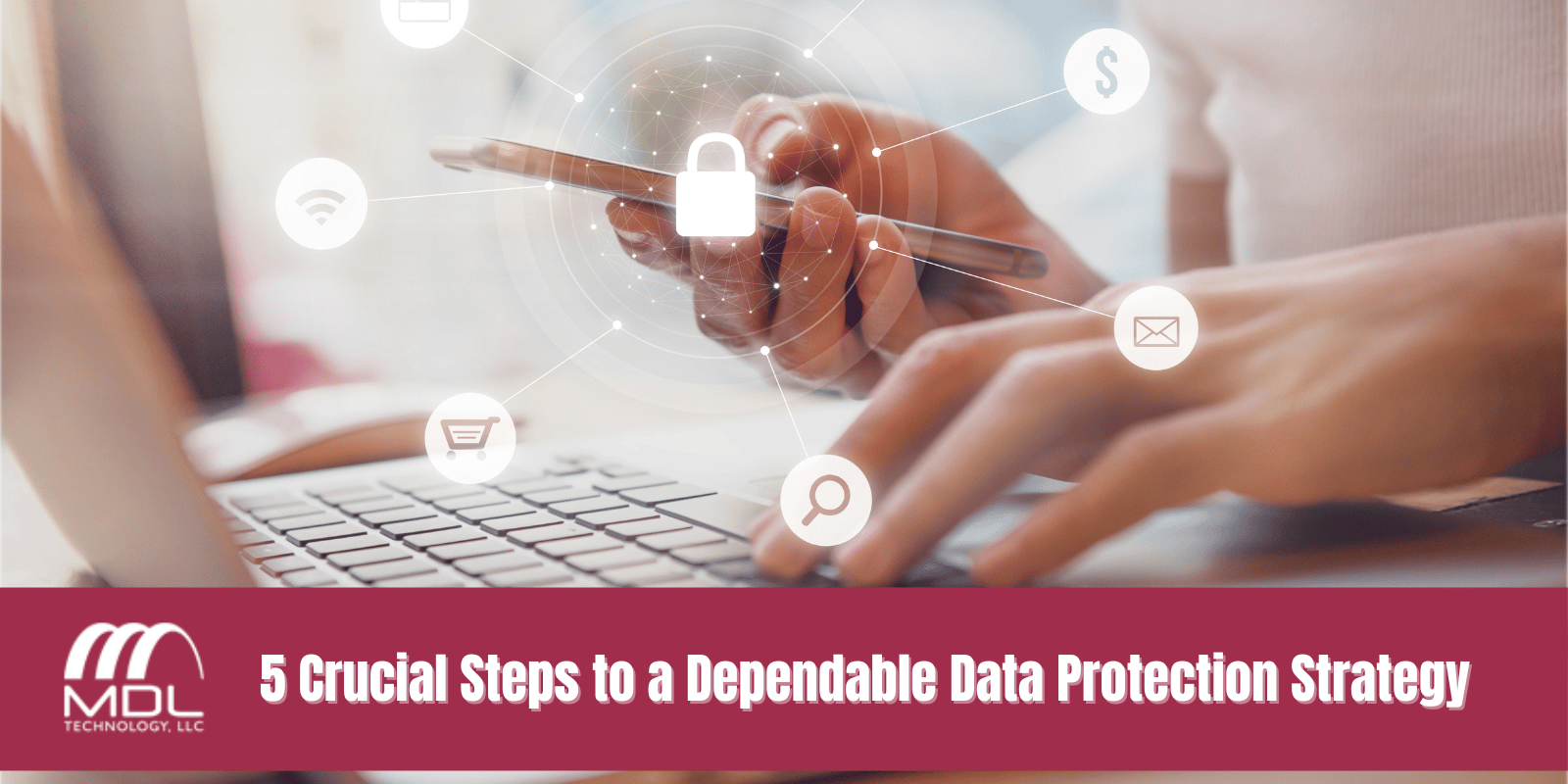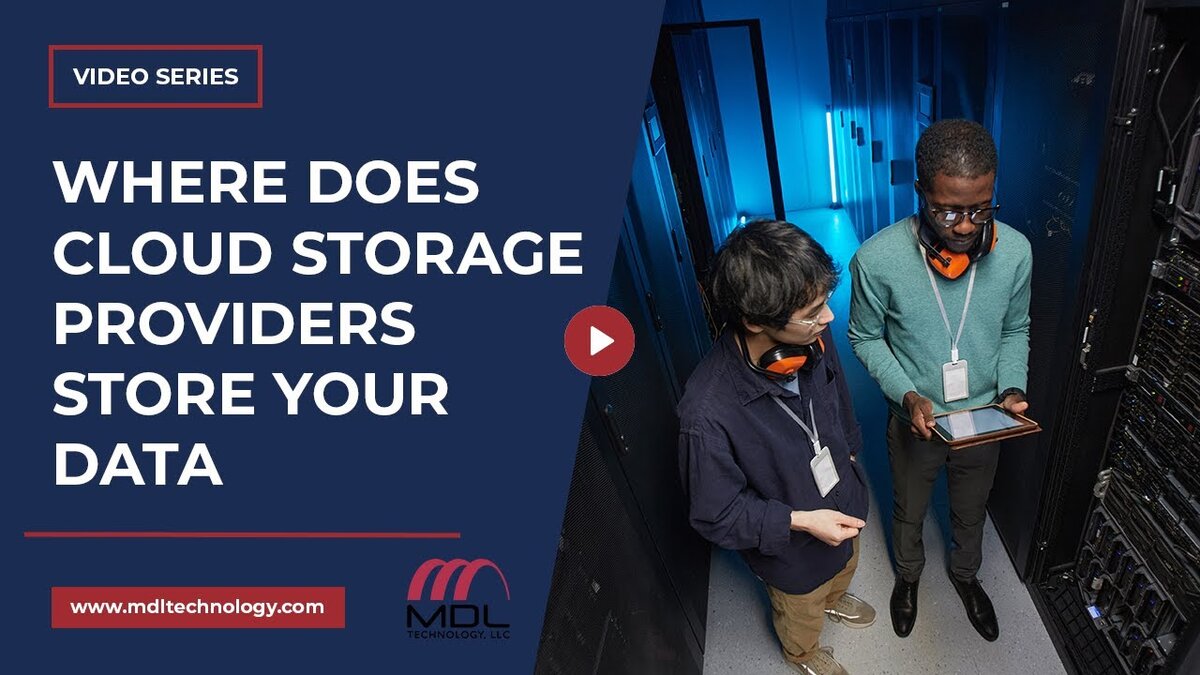We all have nightmare scenarios that haunt our thoughts at night. It may be finding a nest of rabid raccoons in your closet or accidentally showing up to the office without pants. But, for many business owners, it’s logging into your computer only to realize that all your most important data is lost or held hostage.
Unfortunately, data loss is the most realistic nightmare scenario. In fact, the 2021 Thales Data Threat Report found that almost half (45%) of U.S. companies suffered a data breach in the past year.
Whether it’s from malicious attacks, disastrous user error or external circumstances, your data security status can keep you up at night. Therefore, dependable and secure data protection and a recovery plan are integral to every company.
Here are five crucial steps to a data protection strategy that will protect your data and help you sleep better at night.

But first, what is a data protection plan?
Every business has sensitive data to protect — from patient health info to credit card data. Unfortunately, when this info falls into the wrong hands, it can be embarrassing, costly and time-consuming to fix.
A comprehensive data protection program takes extensive measures to have several safeguards against malicious attacks and user errors. Data protection programs include barriers for unwanted eyes, disaster recovery, a dedicated team and more to mitigate any potential threat to your business’s most sensitive data. And if a breach does happen, a data protection program will also minimize the damage of a breach by safely restoring any data lost or held hostage.
Companies as big as Intel, as small as your local mom-and-pop shop and everything in-between can benefit from a dependable data protection strategy. And with the United States experiencing the most data breaches out of any other country in the world, the threat can feel incredibly close to home.
In 2021 alone, 212.4 million U.S. users (and their most sensitive data) were affected by company data breaches. Protect your patients, clients, customers and partners from being a part of that statistic with a solid data protection strategy.
5 Steps to a Comprehensive Data Protection Strategy
Secure Cloud Storage and Sharing
Are you storing your data in the most secure way possible?
Most companies need to find the right balance of data security and accessibility to store, share and view data without making it available to hackers. Cloud storage is usually the solution that companies turn to meet this balance.
Cloud storage can protect your company from user error and internal threats with limited access, location flexibility and a simple user experience. With cloud storage, team members can access data from anywhere while keeping it secure. When your company uses the cloud, your team can set up tiered access, so employees only have access to the data they need for their job.
Cloud storage protects your data from external threats by housing your data in a secure, compliant data center.
Cloud storage can also ensure your data stays secure during infrastructure and company growth transitions. In addition, the easy scalability of cloud storage minimizes the chances of data becoming more vulnerable during any rapid company growth.

Proper Employee Training and Internal Processes
Your data is only secure if your team works together to secure it. Unfortunately, compromised credentials are one of the most common causes of a data breach, and even the most secure companies can fall prey. Most recently, Verizon Wireless was a victim of a breach due to compromised credentials, and hackers charged thousands of dollars to a large number of Verizon customers.
From employee blunders to more malicious internal threats, your employees hold the key to your data. However, proper cybersecurity context and training ensure they don’t pass that key to anyone.
Proper data protection employee training covers:
- Good password habits
- Ways to identify phishing attempts, scams and potential breaches
- Secure data storage processes
- In-office and at-home cybersecurity practices
- Game plans for lost or stolen devices
Like data protection training, data storage training ensures that all data is efficiently organized, accessible and located in the right area. This may seem more like housekeeping than protection. Still, suppose your company does not have a universally-understood data organization. In that case, sensitive data that should have the highest level of admin access could fall through the cracks and into the wrong hands.
Proper data storage employee training covers:
- Defining what is sensitive data for your company and what needs additional security
- A strict naming hierarchy
- Have a specific process for when to turn a cluster of files into a new folder (e.g., once a particular group of files exceeds 10 items, create a new folder)
- An understanding of when to archive older data
- Consistent storage cleanup
- An understanding of who in your company can edit, move or archive data
- Limited admin access so only specific individuals can do more than view the data
Cybersecurity
Somewhere in the world, there is a cyberattack happening every 39 seconds. That’s a tidal wave of threats hoping to sneak past your data protection strategy.
Cybersecurity is a set of precautions to secure your digital ecosystem against cyberattacks. Data protection is a set of safeguards to secure your data from internal and external threats. While the two responsibilities are not identical, the two are very closely related. For example, where data protection focuses on information stored in a system, cybersecurity duties zone in on protecting the system itself.
Your cybersecurity and data protection strategies must work hand in hand to deter malicious attacks and keep your information safe. That’s why many companies choose to work with a single company that can handle both responsibilities as a part of their managed services.
Cybersecurity for data protection consists of:
- Malware detection
- Identifying and fortifying any digital backdoors
- Securing each device from individual attacks
- Network monitoring and protection
- Application updates and testing
- Bug identification and mitigation

Regular Compliance Auditing, Maintenance and Patch Management
As a part of the overall cybersecurity umbrella, monitoring, audits, updates, testing and fixes play a considerable role. Through both automation and human efforts, these practices act as the eyes and ears for any malicious activity attempting to penetrate your system.
Compliance Audits are comprehensive reviews that protect your company from potential infractions, lapses from guidelines or rule-breaking in your data protection strategy. This auditing and compliance fortifies your protection design and protects your company from non-compliance fines, lawsuits or other costly consequences.
Proactive maintenance is almost like looking into a crystal ball of what threats are coming your way and fixing them before they leave a mark. Proactive maintenance services will be able to detect components of your IT infrastructure that are likely to create problems so you aren’t ever blindsided by threats. This minimizes surprise shutdowns, brownouts and downtime that can really damper the workday. Great proactive maintenance providers will schedule activities at a time of your choosing, so everything is up and running when you need it.
Patch management keeps every application in your system updated and fresh, so you have all of the latest abilities with no lasting bugs. Each application update usually includes security updates, so hackers find more luck infiltrating systems that don’t enact regular patch management. Automating this process takes human error out of the equation. For example, at MDL Technology, we provide centralized patch management that updates all devices from a single interface under single control.
A Dependable Disaster Recovery Plan
Disaster recovery is the last step in your data protection strategy. Unfortunately — even for companies with responsible cybersecurity and data protection — stuff happens. When a company experiences a malicious cyberattack with no disaster recovery plan, its data will be held hostage by the hacker. The lack of a disaster recovery plan can leave some severe damage from expensive ransoms to a high threat of overall data loss.
With a secure and dependable disaster recovery plan, you will always have access to your most important data. Off-site backup options keep your data safe and secure if something happens to your mainframe or data collection tools. Automation ensures that the secure backup always has the most current data. Advanced encryption tools confirm no one can access your data without your knowledge.
Rely on the Professionals — We Can Help
A long list of security measures and responsibilities can help protect your data, and it can be overwhelming to take it all on internally. MDL can handle your entire data protection program, so you can rest easy knowing your sensitive info is in good hands.
Many assume that outsourcing their technology needs comes with a hefty price tag. However, with affordable solutions for businesses of all sizes and industries, MDL Technology is there for your IT needs every step of the way. Contact us today to learn more.







